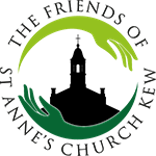14th April 2021 6.00-7.00pm
To order a copy of this new book ‘Gainsborough in London’ By Dr Susan Sloman.
Contact the Kew Bookshop – Hewson Books via Email: Phone: 020 8876 1717. www.hewsonbooks.co.uk

Gainsborough engravings in the Tate ‘cannot have been produced by the artist‘
Scholar Dr Susan Sloman has reattributed three wooded landscapes dating from the 1780s to the hand of artist’s nephew Gainsborough Dupont
The Tate and the British Museum are among institutions worldwide that boast landscape prints by Thomas Gainsborough, the great 18th-century British master. Three of those prints should no longer be attributed to him, according to new research.
Dr Susan Sloman, a Gainsborough scholar, has reattributed three wooded landscapes dating from the 1780s to the hand of Gainsborough’s nephew and sole studio assistant, Gainsborough Dupont.
Catalogue descriptions for prints such as a “Wooded Landscape with Country Cart” will have to be changed by museums and galleries as they are not by Thomas Gainsborough, she has concluded, partly from crucial stylistic evidence. Gainsborough was right-handed and the predominant angle of his shading lines is from lower left to upper right.
Dr Susan Sloman
As an original print is a mirror image of the original plate, he would deliberately reverse the direction of those lines on to the plate so that he could make accurate imitations of his drawings.
She said: “‘Wooded Landscape with Country Cart’ and ‘Wooded River Landscape’ both have shading that is not reversed.”She explained that these prints were never produced in any large quantity, but there are impressions in quite a lot of collections throughout the world. With variable descriptive titles, they are found in museums and galleries as far afield as New York, Amsterdam and Berlin.
The original copper plates from which all three prints were made are in the Tate.The problem, Dr Sloman has also discovered, lies in that two of them – “Wooded River Landscape” and “Wooded Upland Landscape with Riders and Packhorses” – bear the stamp of “Jones & Pontifex”, whose plate-making business only began operating after Gainsborough died.
She had happened to read Mei-Ying Sung’s 2009 study, William Blake and the Art of Engraving, which provides detailed information about plate-makers, including the fact that the partnership of Jones and Pontifex traded between 1789 and 1793: “Gainsborough died in 1788, so those plates date from after his death.”
The ‘Wooded Upland Landscape’ is technically different and does not have linear shading, but it is a Jones and Pontifex plate.”
She said: “Gainsborough’s landscape prints were not published in his lifetime, but his widow collaborated with publisher John Boydell to publish a set of 12 in 1797, seven months after Dupont’s death. “The advertisement for these prints states that the plates have never been out of the possession of Gainsborough’s family, and this was evidently true. By then, Dupont, the one person with inside knowledge of the studio, was no longer there to identify which plates were his uncle’s and which were his.”
Dr Sloman is not criticising any institution for assuming that these prints were by Gainsborough: “It’s not that anybody made a mistake. It’s not that anybody has tried to deceive anybody. It’s something that happened in the 1790s.”
Nor is she criticising the late John Hayes, the eminent Gainsborough scholar and a former director of the National Portrait Gallery, who had included the three prints in his 1971 study, “Gainsborough As Printmaker”, which has never been revised.
She said: “Hayes was a pioneer…He did an enormous amount, cataloguing the drawings, prints and landscape paintings. What he did was extraordinary and of course he didn’t have the internet. It’s simply that time has elapsed, and new information has become available.”
Gainsborough’s landscapes were typically imaginary, artificially constructed. He is known to have arranged mosses, lichens and broccoli on a table, to recreate vegetation.
Dr Sloman acknowledged that the three compositions do resemble Gainsborough’s style, but she said: “Dupont worked in the studio and therefore everything he did looks like Gainsborough because his job was to imitate.”
The Tate, which has the “Wooded Landscape with Country Cart” and the “Wooded River Landscape” in its collection, said: “We always welcome new scholarship on items in our collection and very much look forward to hearing from Dr Sloman about this.”
The British Museum, which has the “Wooded River Landscape” in its collection, said: “We are grateful for any feedback on the collection. There are half a million records for Prints and Drawings accessible online and we welcome any suggestions, improvements or questions regarding previous scholarship. We will certainly look into Dr Sloman’s research and consider amendments.”
Dr Sloman, joint author of the catalogue for the National Portrait Gallery’s exhibition, Gainsborough’s Family Album, will include her new research in her forthcoming book, Gainsborough in London, to be published by Modern Art Press on 9 March.
Her book focusses on Gainsborough’s years in London – from 1774 to 1788 – which marked the pinnacle of his career. It was during those years that he became a favourite painter of George III and a founding member of the Royal Academy, though he later quarrelled with it over their hanging of his pictures.
Article by By Dalya Alberge 6 February 2021 in the Daily Telegraph includes illustrations
